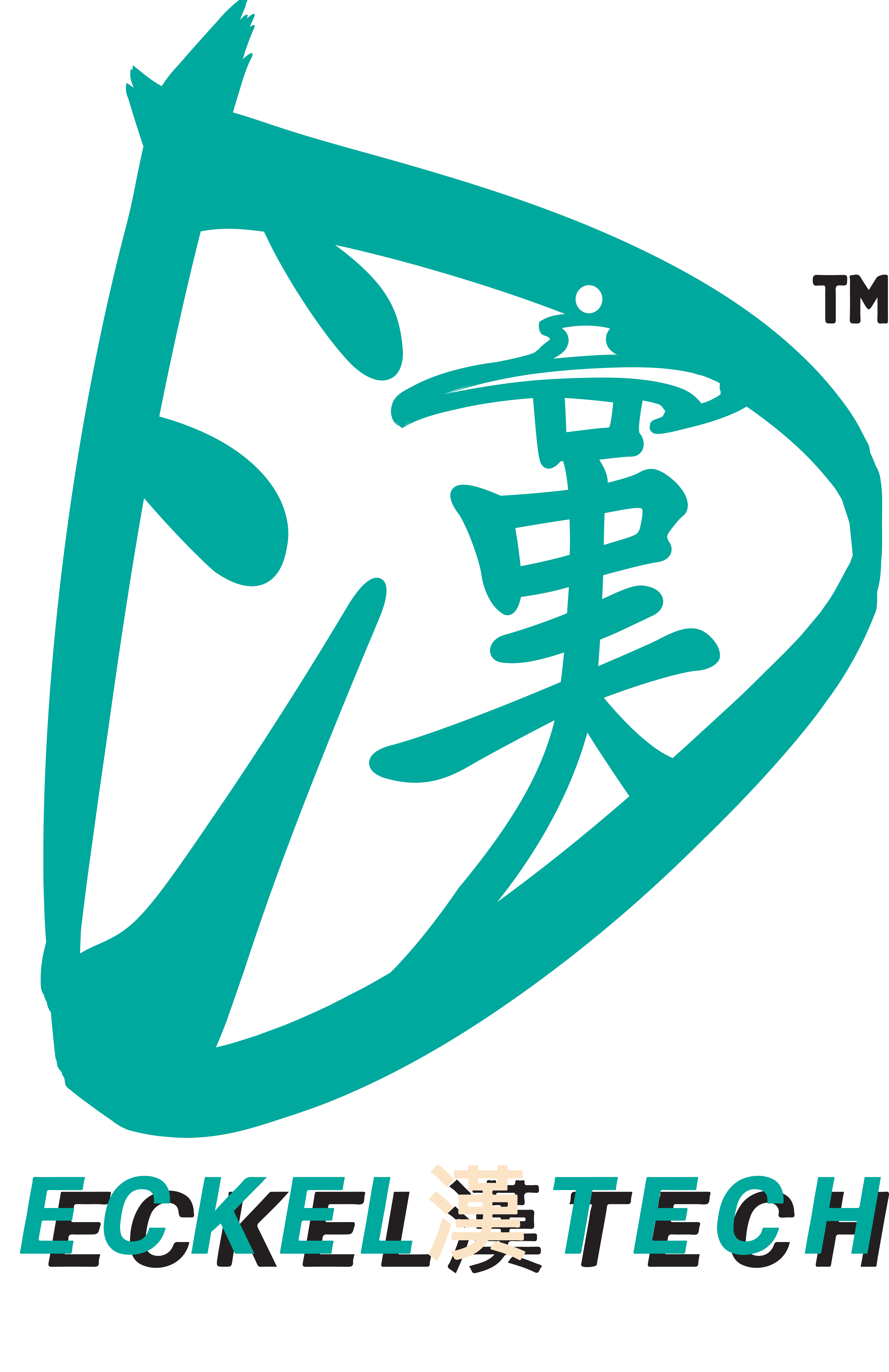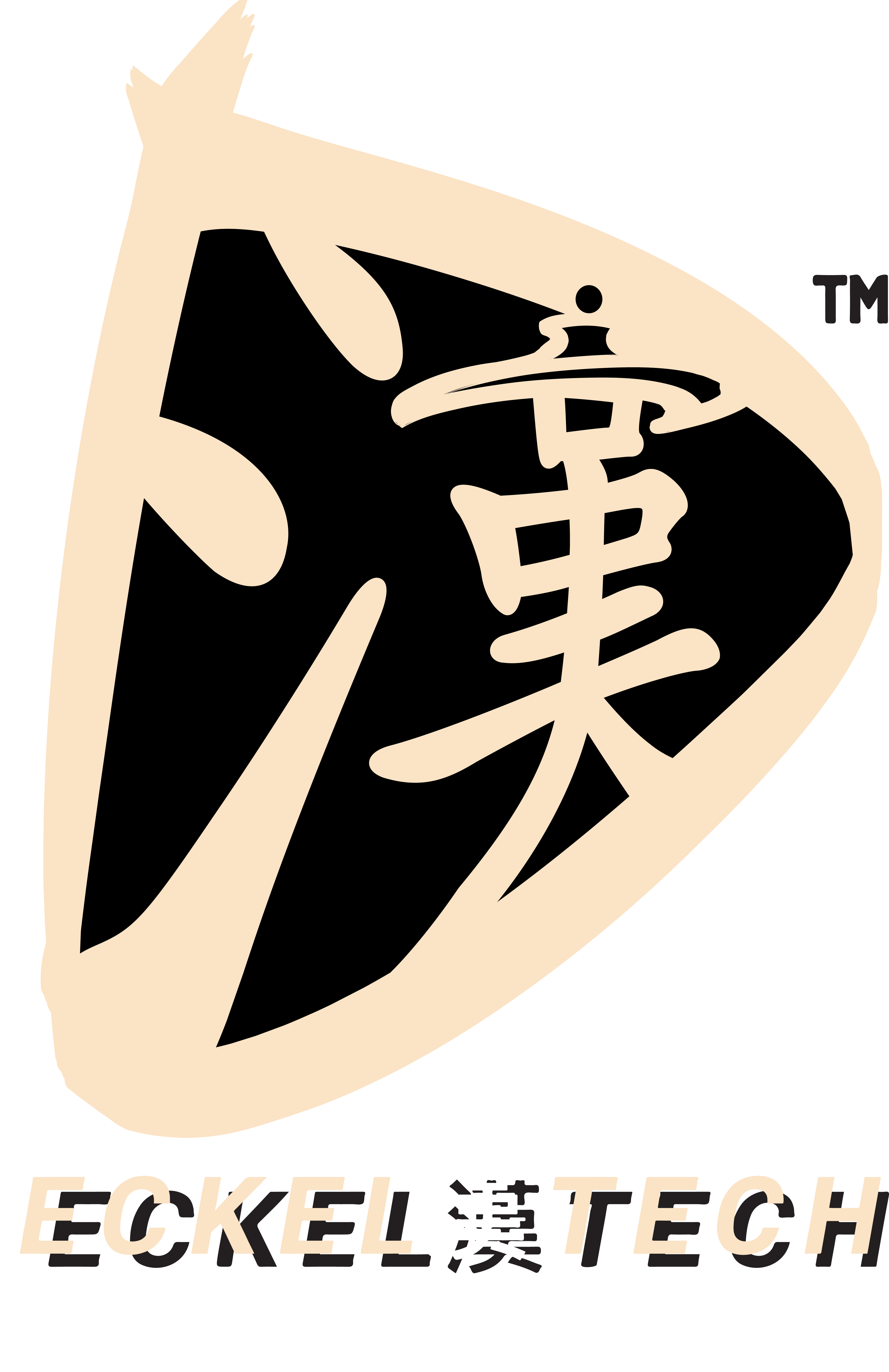Dr. Michio Kaku, one of America’s most popular physicists, grew up with comic books. Before he wrote books on theoretical physics, he wrote an influential essay, "Media: Racism in the Comics," Bridge 3, no. 1 (February 1974), about racism and the comic book industry. Specifically, he talked about how comic books perpetuated Asian/Asian American stereotypes. Many comic book characters are iconic in our entertainment industry. With their sustaining popularity, the comic book stereotypes have become ingrained in our media and our collective consciousness.
According to Dr. Kaku, there are five general character types for Asians in comic books:
1. Dr. Fu Manchu
2. Asian Sidekick
3. Asian Hordes
4. Dragon Lady
5. Geisha Girl
In my video, I explore these various character types by altering a general template of two basic figures. My hand drawings illustrate the essentialized visual depictions of Asian Americans in media. The figures drawn on the left side of the paper are of the original caricatures that inspired each respective category. The figures drawn on the right side of the paper are the modern adaptations that still make their way into mainstream media today.
Dr. Elaine Kim, former Asian American Studies and Ethnic Studies professor at the University of California, Berkeley, once noted in her book, Asian American Literature (Philadelphia: Temple University Press, 1982), that “‘Bad’ Chinese are the sinister villains and brute hordes . . . which cannot be controlled by the Anglos and . . . therefore, must be destroyed. The “good” Chinese are the helpless heathens to be saved by Anglo heroes or the loyal and lovable allies, sidekicks, and servants . . . .”
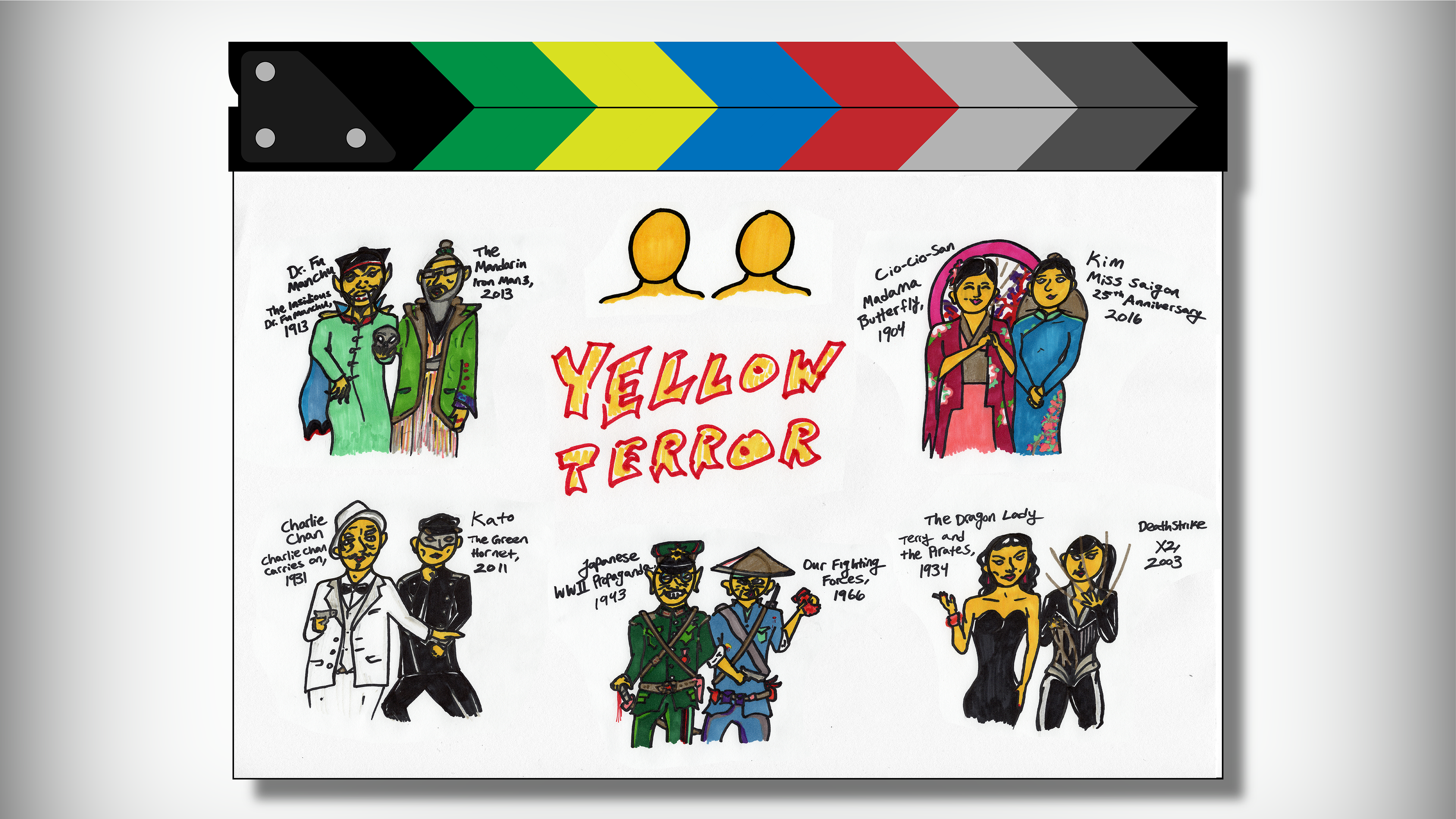
YELLOW TERROR Slate
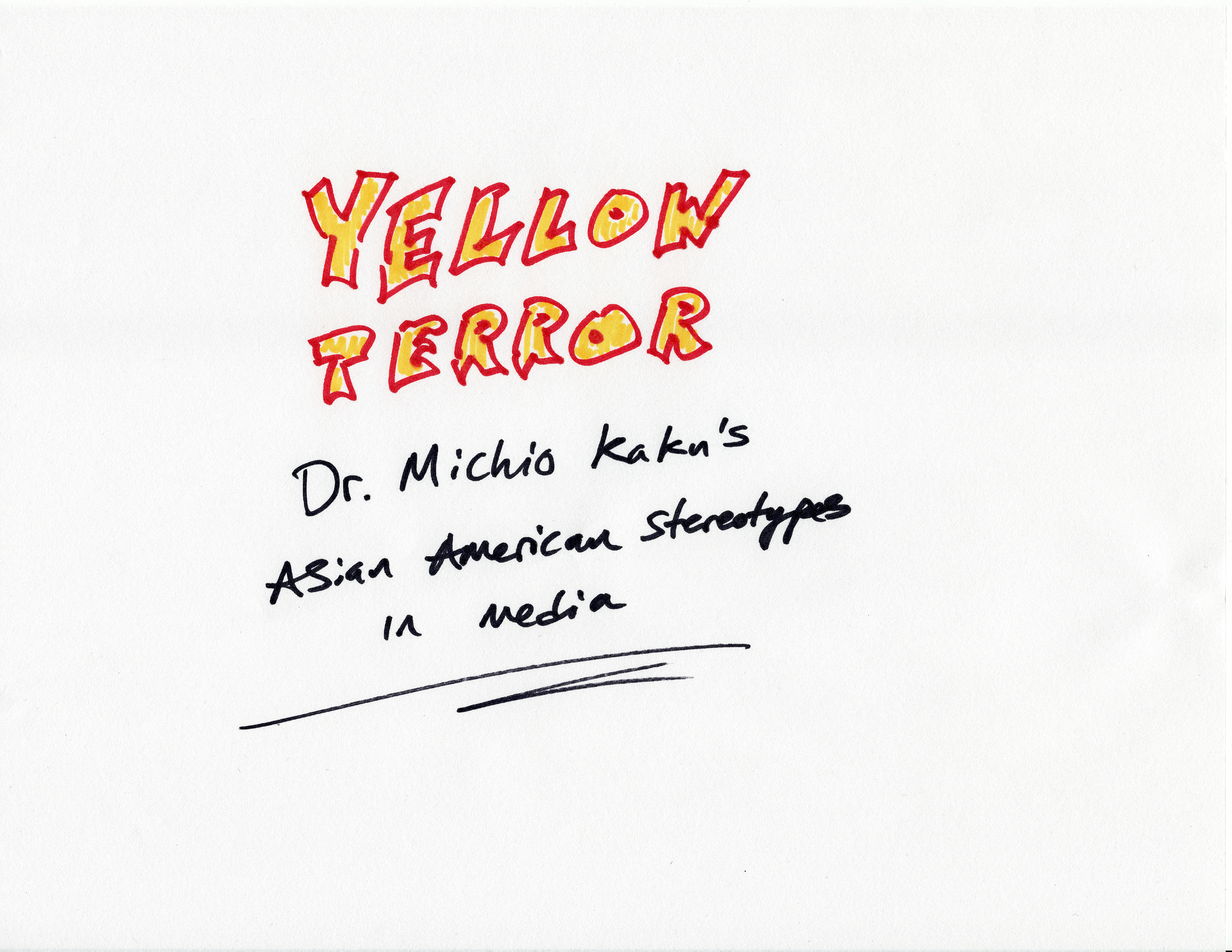
Drawing 1 - Intro, Dr. Michio Kaku
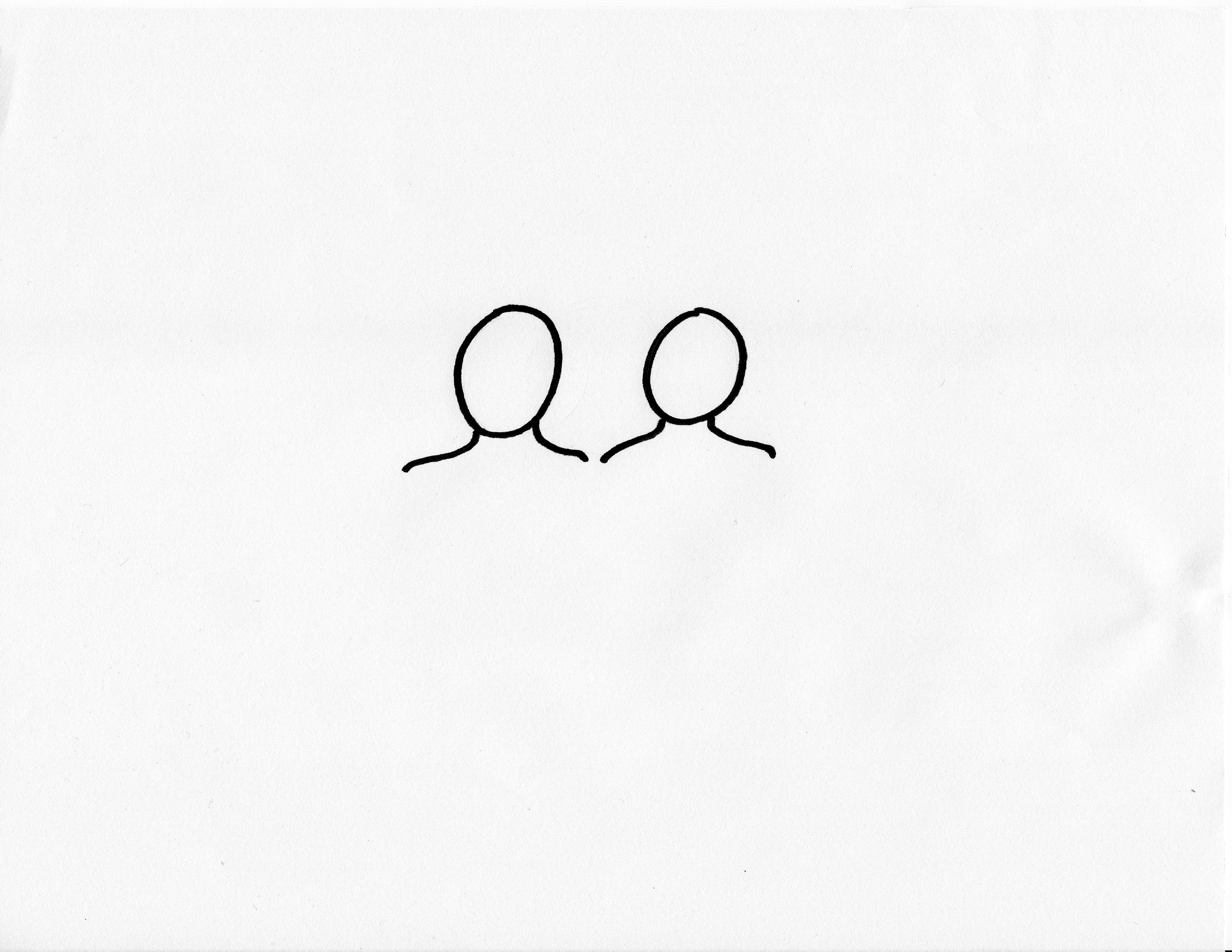
Drawing 2 - Template
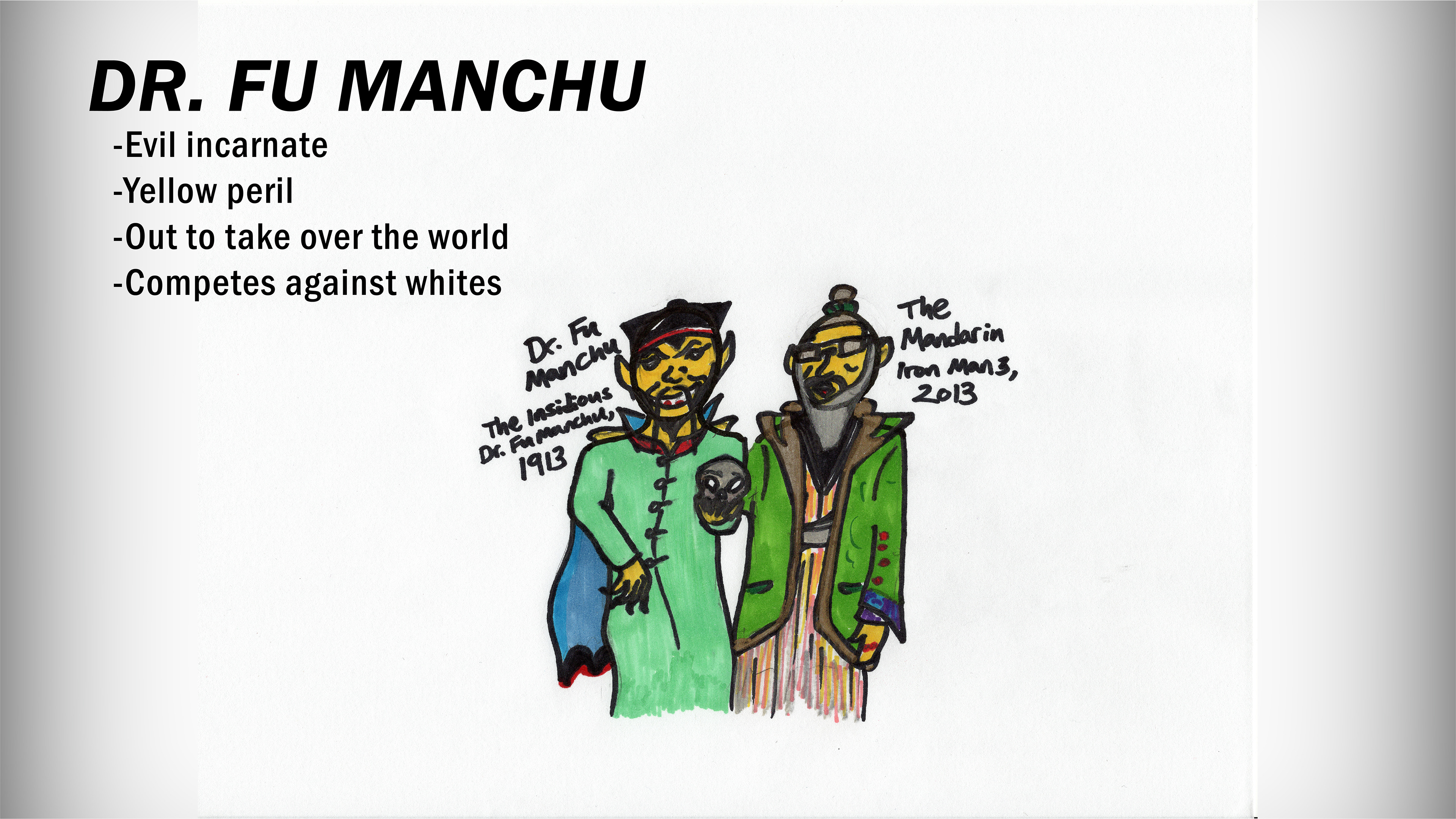
Drawing 3 - Dr. Fu Manchu
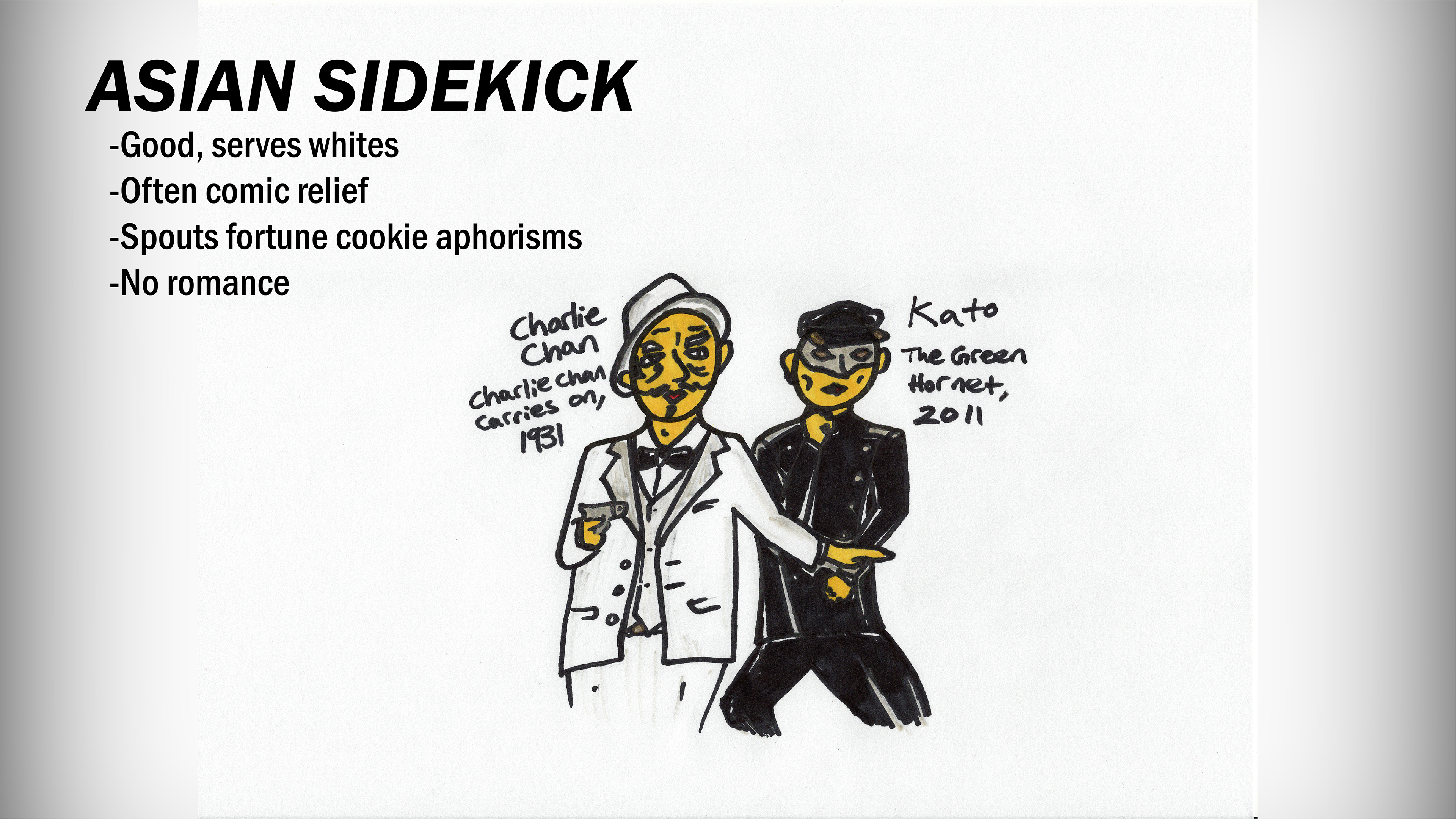
Drawing 4 - Asian Sidekick
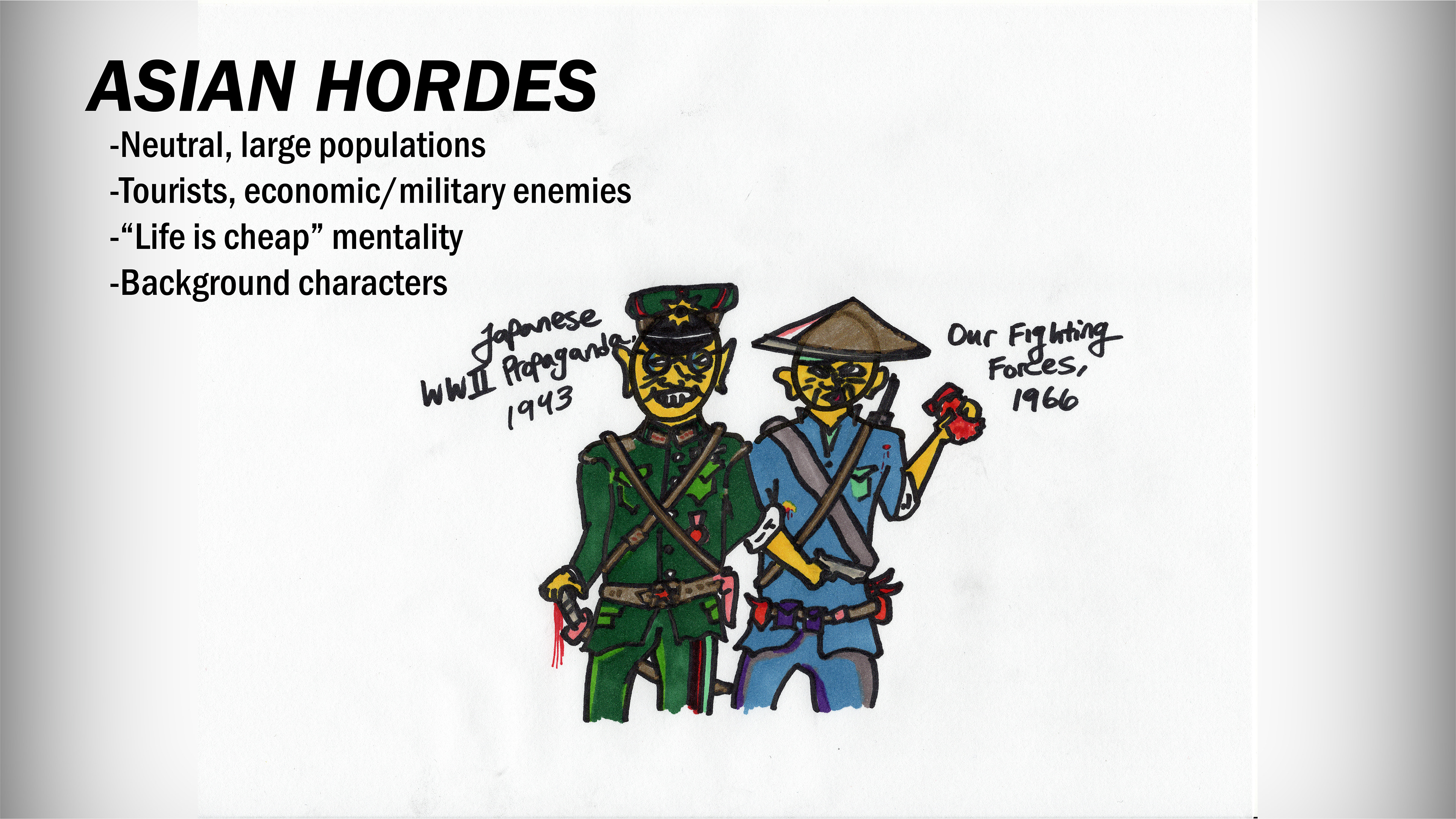
Drawing 5 - Asian Hordes
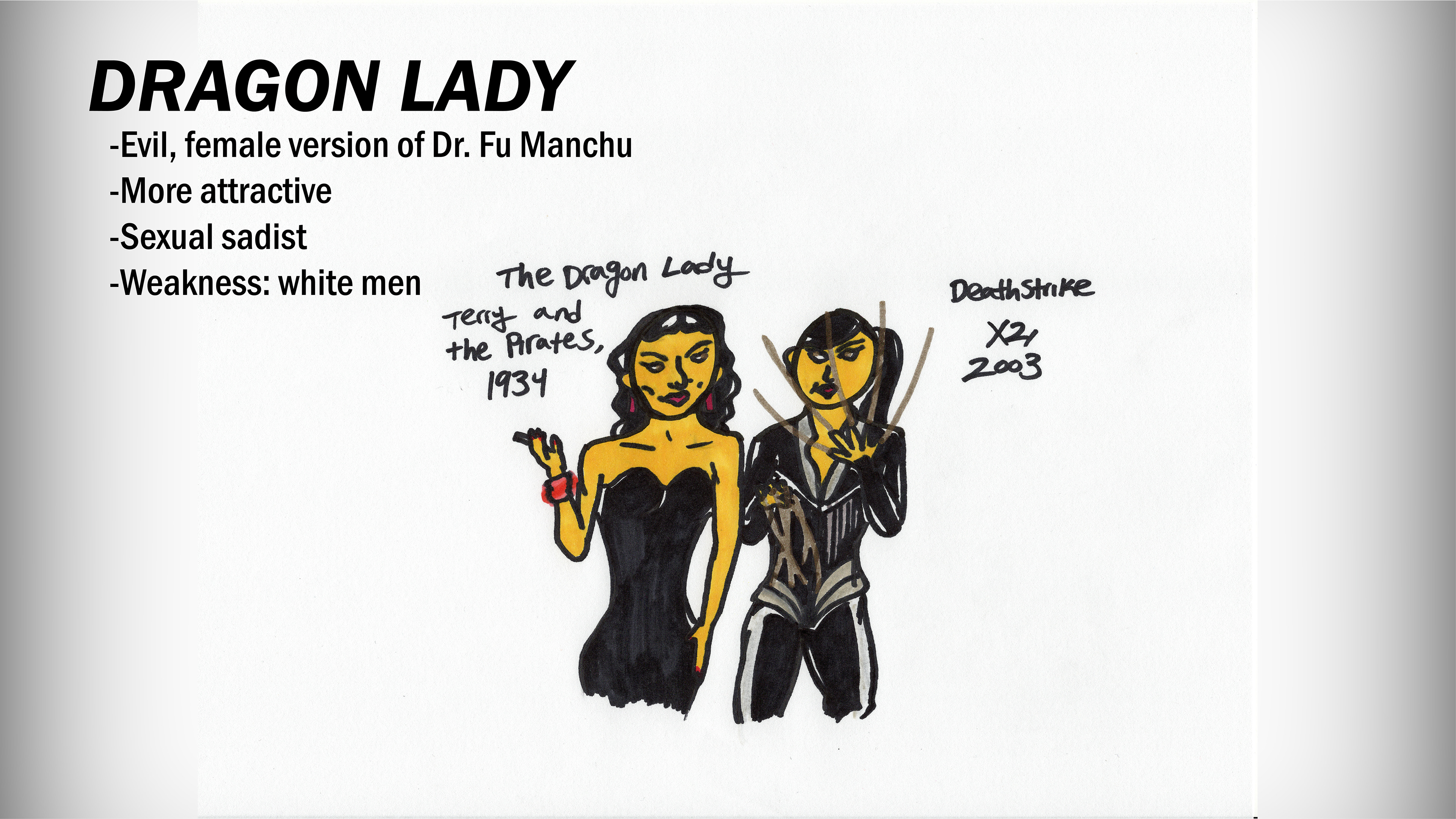
Drawing 6 - Dragon Lady
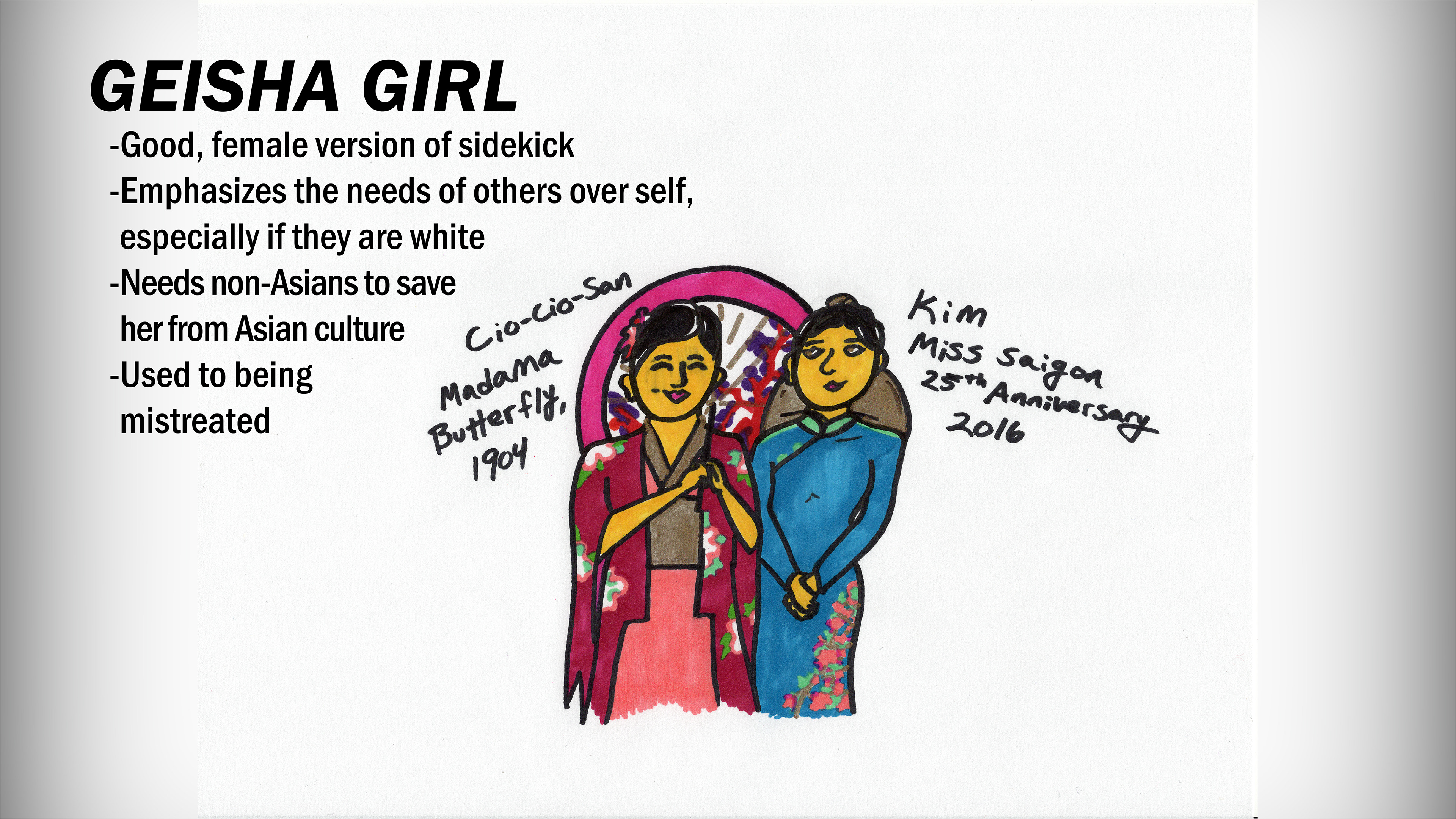
Drawing 7 - Geisha Girl
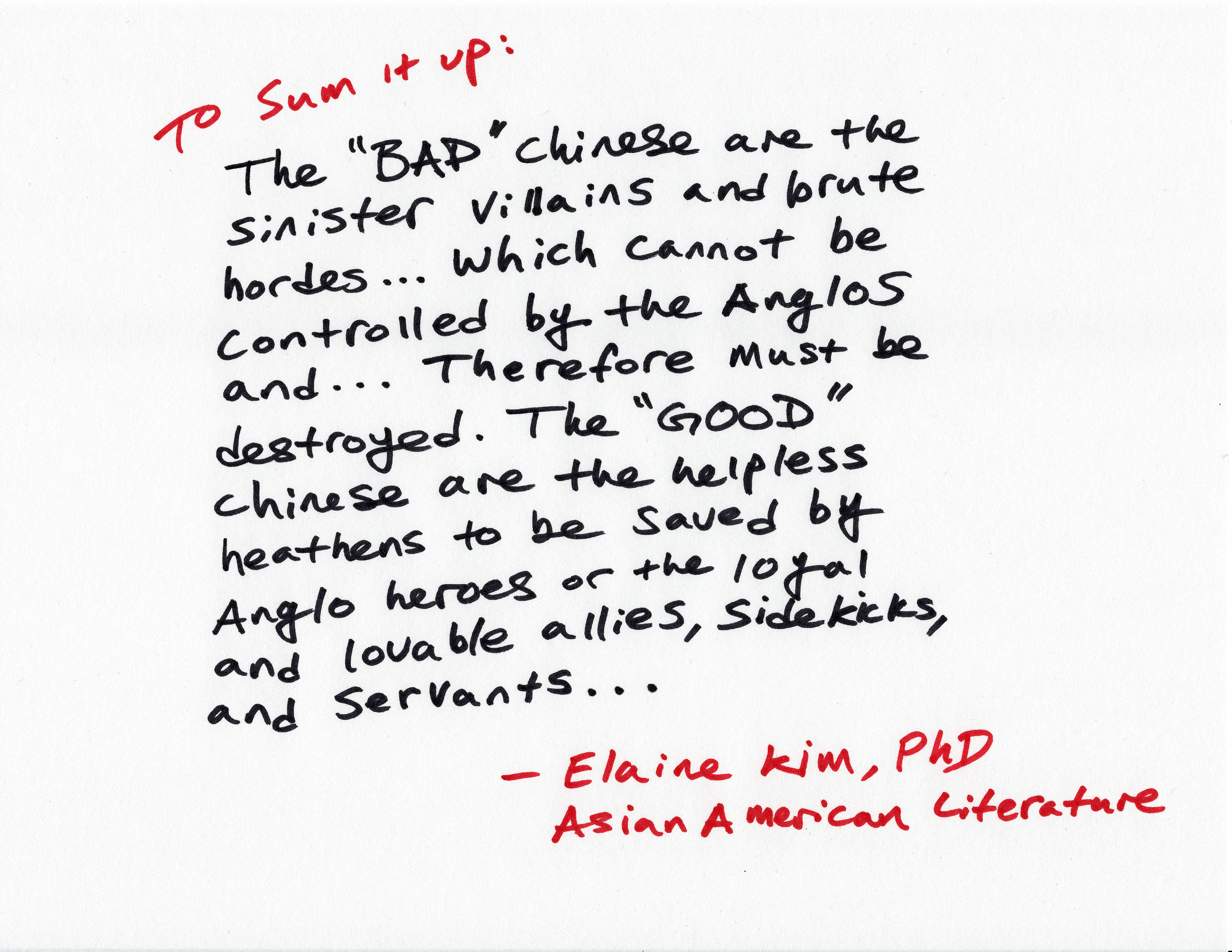
Drawing 8 - Dr. Elaine Kim
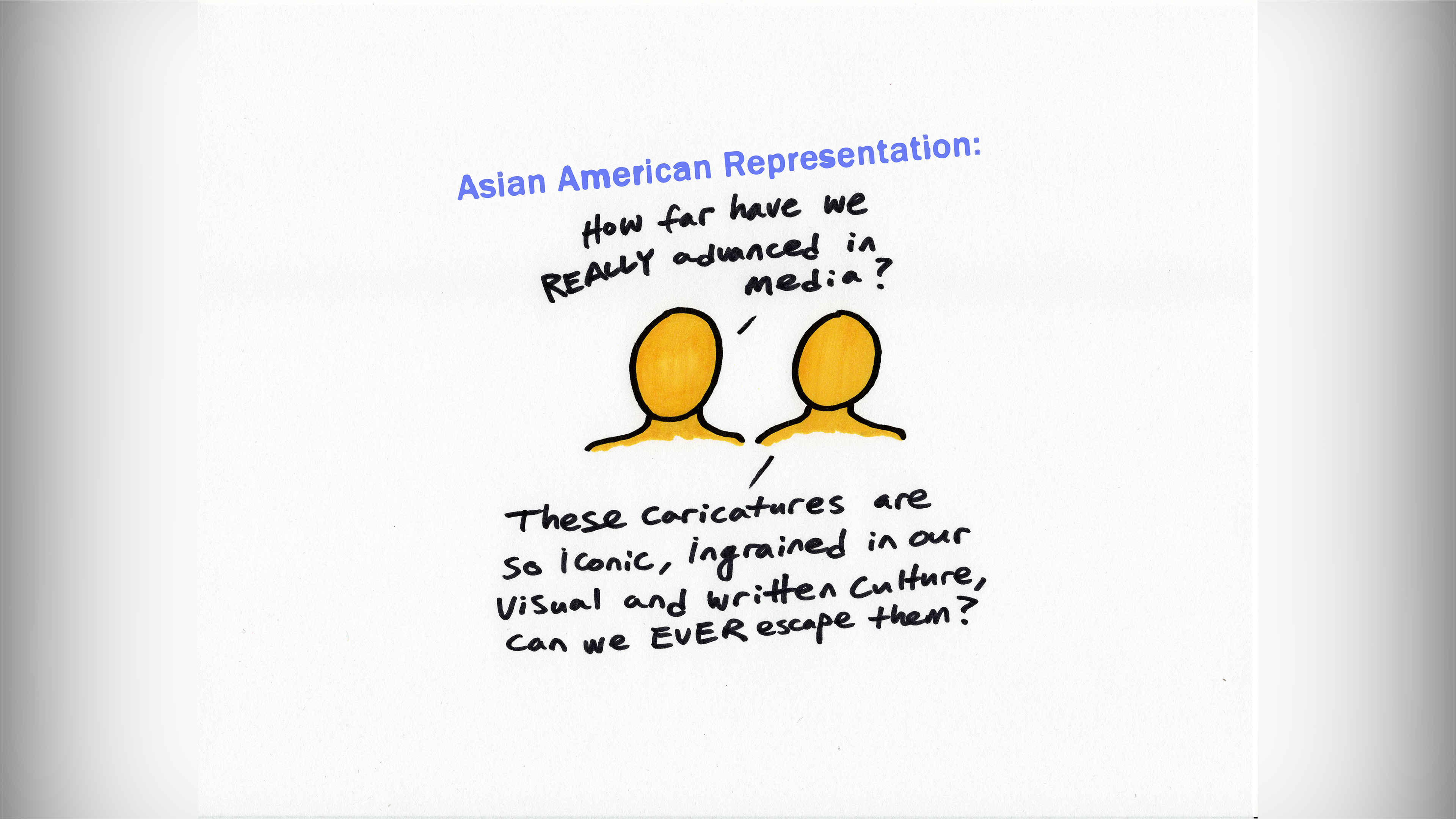
Drawing 9 - Outro
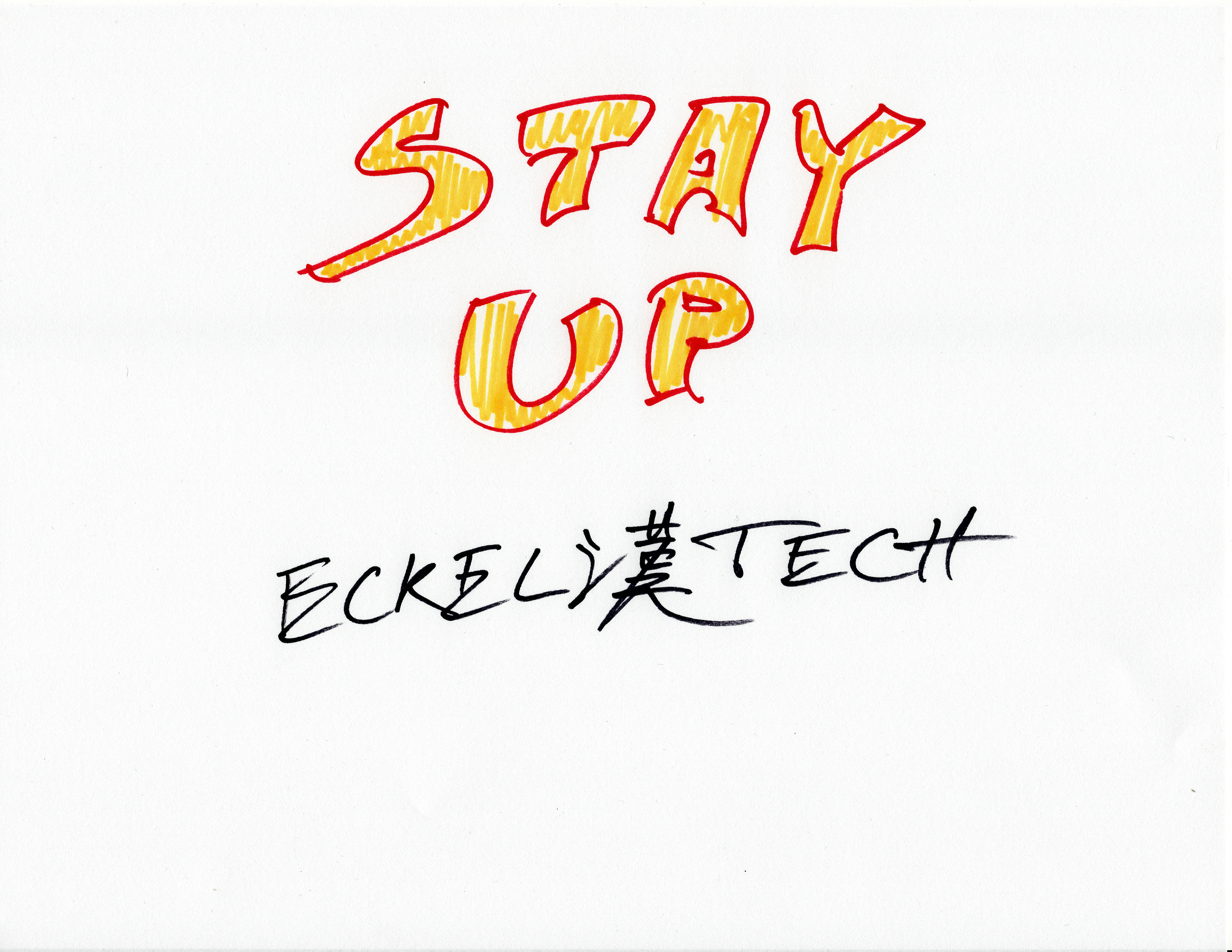
Drawing 10 - Stay up
Later in the video, the white piece of paper with the basic figures, then colored in yellow, not only shows how some of these caricatures were played in “yellow face” by other white actors, but how some Asian Americans were also forced to "play a white man playing an Asian." When some Asian Americans internalize these images, they may develop self-hate and false beliefs, while remaining oblivious to the racist systemic foundation that white Hollywood, comic books, and other media were built upon.
Time for a clean slate.
Keep in mind that Asian Americans are mostly invisible in the media. But when we are used as "window dressing" for a set, the image Asian Americans often see is a caricature; audiences really do not see "real" Asian Americans. My video encourages people to "stay up" and be aware of what is being shown all around us, including the oppressive history that inspired the caricatures displayed in the video. Do not believe “the hype” that media sells us. We demand changes. It is time for a clean slate.
